Text
No more updates :(
Hey guys, I'm sorry to say that I will be abandoning this blog. This is something I've actually been considering doing for some time now. I just feel that, given how infrequently I post updates about work, and given that I no longer write articles like I used to, that there is very little to distinguish my blog from other animal blogs out there (and there are some damn good ones that you'd be better off following).
I am not disappearing from Tumblr, however! It would be more accurate to say that I am moving everything I do here to my main blog (click here). So please feel free to follow me there, if you want to keep seeing animal-related stuff (as well as all the other junk I post). I will probably continue to share pictures from my job there, too.
I will also leave this blog up for any who want to look back at it, read my old articles/work stories, etc.
Sorry if this has upset anyone - I've been running this blog for almost a year, so I gave it a good shot. If you aren't interested in following my main blog, it was nice knowing you, and here are some other animal blogs I would recommend following (I will continue reblogging from them on my main blog):
-scalestails
-howtoskinatiger (tw for hunting, taxidermy, death, etc)
-cats-explained
-animalwelfarists
-notactuallycute
-moreanimalia
-actuallycute
-lookatthisbabybird
-fairy-wren
Bye guys!
4 notes
·
View notes
Photo
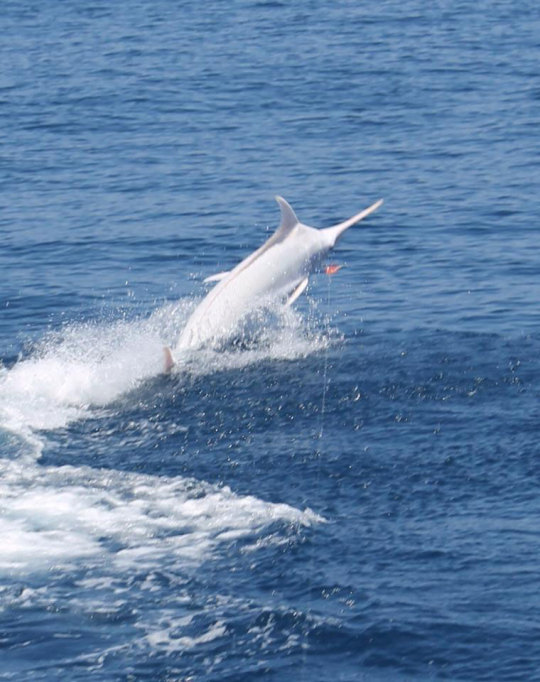

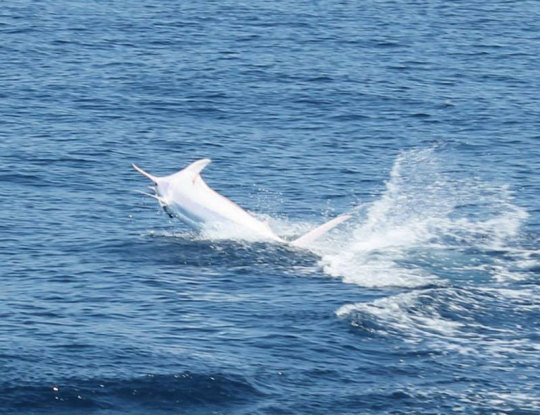



Have you ever seen a white blue marlin? Now you have, thanks to Bob and Karen Weaver. The couple were fishing off the coast of Los Sueños, Costa Rica aboard the Spanish Fly when they caught and released what both the International Game Fish Association and The Billfish Foundation have identified as a leucistic blue marlin.
Unlike albinism, leucism is caused by a reduction in all types of skin pigment, not just melanin.
"A further difference between albinism and leucism is in eye colour. Due to the lack of melanin production in both the retinal pigmented epithelium (RPE) and iris, albinos typically have red eyes due to the underlying blood vessels showing through. In contrast, most leucistic animals have normally coloured eyes."
Both organizations also agree that this is the first time such an awesomely rare creature has been caught on camera. The photos were taken by the crew of the Spanish Fly, a fishing boat chartered through Maverick Yachts and Sportfishing Charters.
[via Twisted Sifter]
927 notes
·
View notes
Photo
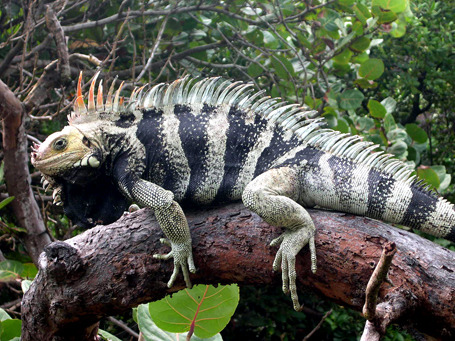
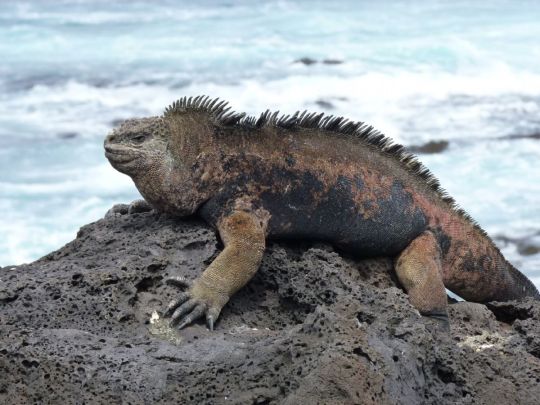
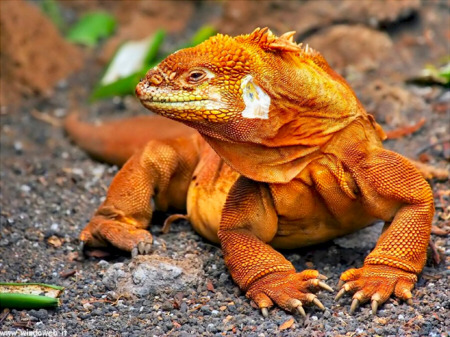

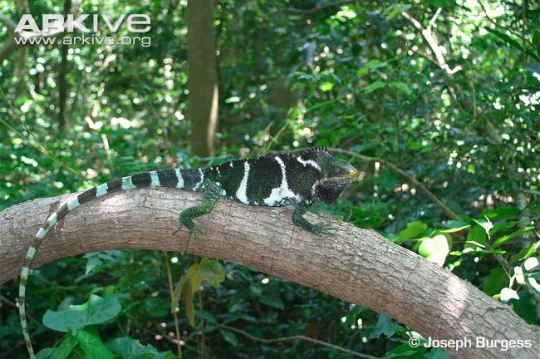
In response to skummyskull's question, these are my top 5 favorite iguanas because it took way too long trying to narrow down my top 5 reptiles in general! x_x First is the St. Lucian iguana. It is debated whether or not it’s its own species separate from iguana iguana or just a unique coloration found only on the island. All the info I could find about them just said “The St. Lucia Iguana comes from a unique population distinct from other green iguanas. It grows to about 6 ft in length.” It looks pretty unique to me!
Next is the Marine iguana (Amblyrhynchus cristatus). Darwin was revolted by the animals’ appearance, writing:
The black Lava rocks on the beach are frequented by large (2–3 ft [60–90 cm]), disgusting clumsy Lizards. They are as black as the porous rocks over which they crawl & seek their prey from the Sea. I call them ‘imps of darkness’. They assuredly well become the land they inhabit.Next is the beautiful lumpy orange baby, the Galapagos Land Iguana (Conolophus subcristatus). Darwin described these as "ugly animals, of a yellowish orange beneath, and of a brownish-red colour above: from their low facial angle they have a singularly stupid appearance." dang, Darwin.
On South Plaza Island, where the territories of marine iguanas and land iguanas overlap, the two sometimes interbreed, resulting in a hybrid iguana with a mixture of features from each species.
The next is simply an albino iguana iguana, a spectacular tangerine albino morph bred by Tom Crutchfield. His iggies inspired my character, Gerine.
Last is a crested Fiji iguana (brachylophus fasciatus), an adult form that’s very hard to find images of. Many seem to prefer photographing their juvenile stages which show vivid colors from blue to green, but I tend to prefer this darker form of the older individuals. It is one of the few species of iguanas found outside of the New World and one of the most geographically isolated members of the family Iguanidae. The Fijian name for iguana is “vokai”, although some tribes call it “saumuri”. Two tribes regard the iguana as their totem and as such its name is not allowed to be mentioned in the presence of women or the offender may be beaten with a stick.
Populations of these iguanas have been declining over the past century due to habitat destruction, and more significantly, the introduction of mongoose and house cats to the islands.
86 notes
·
View notes
Photo
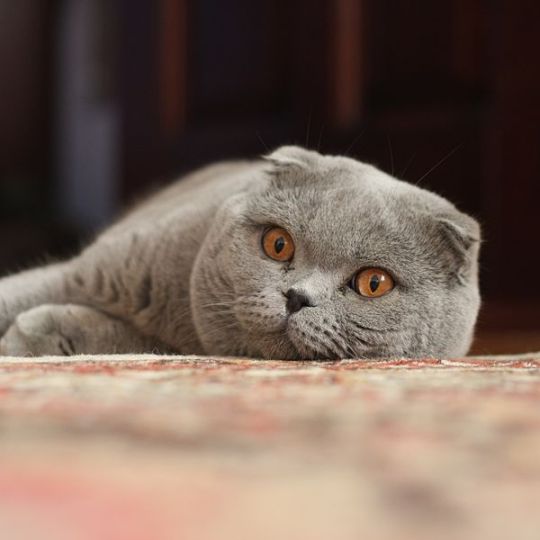
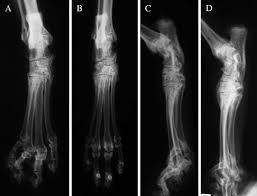
If you love Scottish fold cats, I’m going to tell you something you don’t want to hear. Please, please read on anyway. If you are considering adopting a Scottish fold, PLEASE continue reading. This information needs to be more widely known.
In 2008, the Journal of Small Animal practice released a short report on disorders associated with breeds of cats. In this report, the authors mentioned the Scottish fold:
People who own them may be “charmed” by their round faces and open expression (and they may not realise that the reason the cats do not move around too much is because they are variably crippled with arthritis).1
The gene that causes the cute fold in the Scottish fold’s ear also leads to the development of a degenerative disorder called osteochondrodysplasia. ALL Scottish folds have this disorder, whether they show symptoms or not- the fold in their ears is caused by a cartilage deformity that also affects their joints.
Osteochondrodysplasia leads to crippling osteoarthritis, which affects Scottish folds at much younger ages than other breeds of cats. In cats heterozygous for the gene, the disease’s progression can be seen in cats as young as six months. In homozygous cats, it can be seen as early as seven weeks old.
Affected cats may be grossly deformed, with short wide limbs and a short, inflexible tail. They show lameness, swollen wrist (carpal) and ankle (tarsal) joints, have an abnormal gait, and are reluctant to move and jump. Severely affected individuals become crippled and unable to walk.
…Many affected cats are euthanased earlier in life due to the profound effects of this disease.2
The breed is often described as “placid” and “calm.” This is due to the fact that they are constantly in pain due to this disorder. Even in mild, ‘asymptomatic’ cases which can occur in heterozygous cats, they may still be experiencing pain due to cats’ tendency to hide their suffering.
Many breeders of Scottish folds claim that not all heterozygous cats have the disorder, because the studies that examined the cats (which were all, heterozygous or not, shown to have it) had small sample sizes.
In 2003, Lorraine Shelton, a specialist in genetic diseases, offered to pay for 300 x-rays of healthy adult Scottish folds to prove that the disorder was not present in some heterozygous cats.
…She has asked a list of 300 Scottish Fold breeders from around the world to go to their vet to get X-rays done. She had offered to pay for these X-rays but not a single breeder had taken up that offer. You could not know whether this problem existed unless an X-ray was taken. If somebody would send her an X-ray of a healthy hind leg of a folded eared cat, she would be grateful as she wanted to see the very first one.3
To date, no one has taken her up on the offer. The breeders’ unwillingness to have their cats examined speaks volumes. The authors of all studies on these cats agree: it ethically wrong to continue breeding these cats.
It disturbs me that any breeder would knowingly continue to create animals that will be in pain throughout their lives. As a cat lover myself, I am begging you, please do not buy Scottish folds. Do not support these unethical breeding practices, or the concept that it is acceptable to intentionally breed unhealthy animals for the sake of how they look.
Citations
1 Breed-related disorders of cats (discusses issues with other breeds as well)
2 Genetic welfare problems of companion animals: osteochondrodysplasia (a thorough description of the disease and its prevalence)
3 FIFe meeting notes (leading to a decision not to recognize Scottish folds as an offical breed due to the disorder)
There was also a follow-up email about Shelton’s offer which can be read here.
Studies on osteochondrodysplasia in Scottish Folds
Osteochondrodysplasia in Scottish Fold cats
Incomplete dominant osteochondrodysplasia in heterozygous Scottish Fold cats (this is the source of the above x-ray pictures)
Before you buy ANY animal, please do your research. If a breed suffers from high incidences of genetic disorders, don’t use your money to support the creation of more animal suffering.
94K notes
·
View notes
Photo
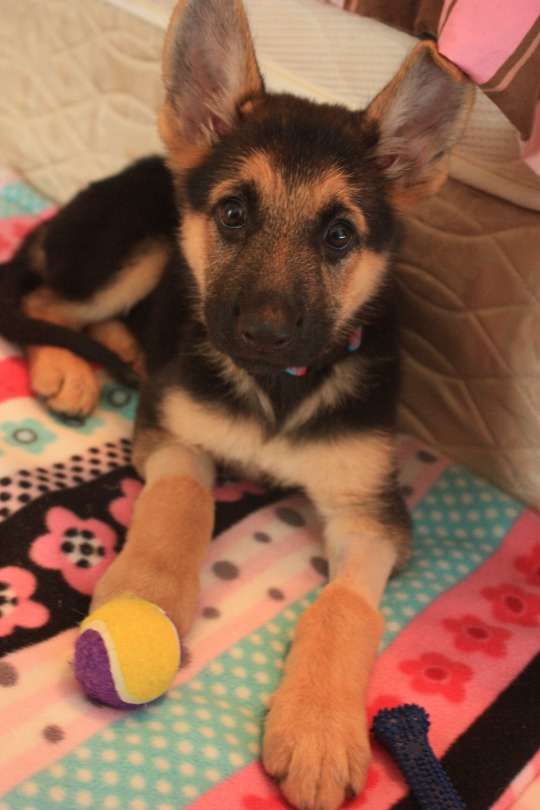
This is Luna, my 9 week old German shepherd puppy. You can follow her on Instagram @lunathegsd.
2K notes
·
View notes
Text
A special collection of dog reaction GIFs
Check em out here. You’ll love them extra if you’re a dog lover!
Dog reaction GIFs?
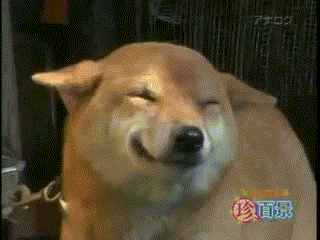
"YES PLEASE?" [VIEW THEM BY CLICKING HERE]
2K notes
·
View notes
Photo

This is our office fish, Hannibal. He started out with other fish, but within a couple weeks was the only survivor.
139 notes
·
View notes
Photo

This is how a happy baby elephant looks like
144K notes
·
View notes
Photo
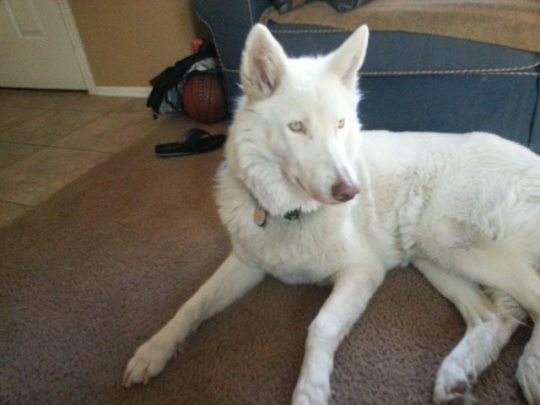

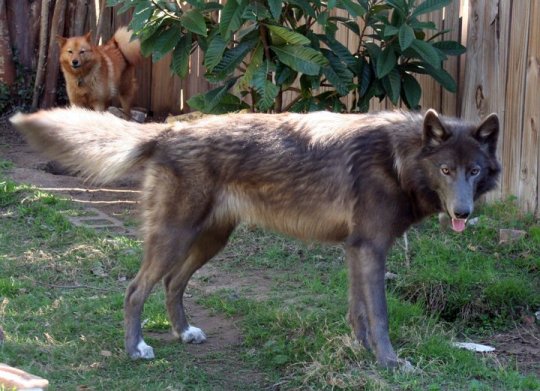


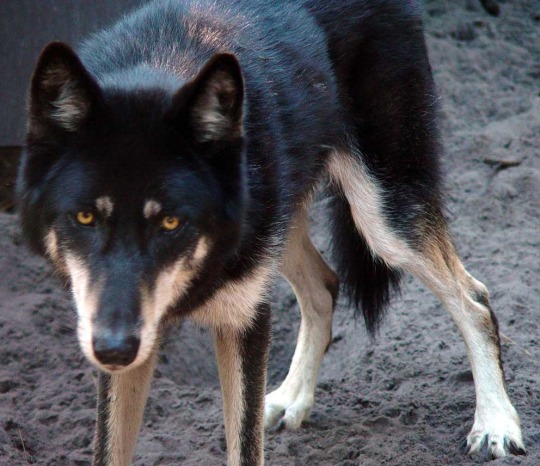


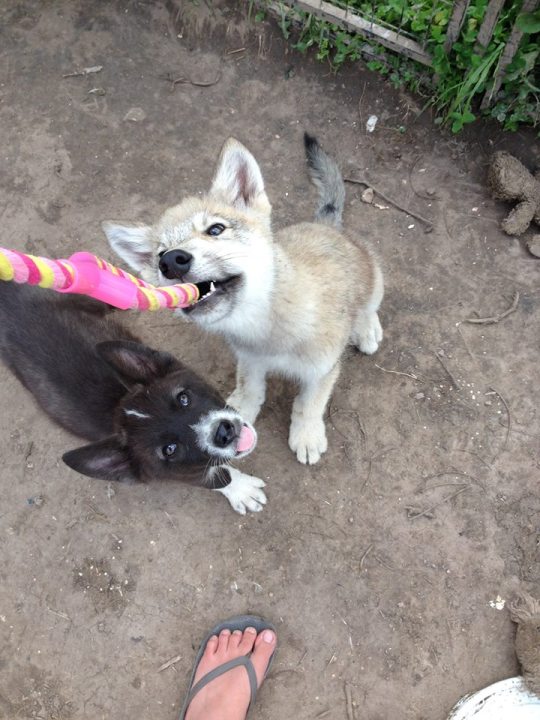

Examples of “unusual” wolfdogs - these are all animals with verified lineage, ranging from low-content to upper-mid. Each threw a unique trait usually seen only in dogs, which has apparently caused some confusion for people attempting to phenotype them. This is a PSA that phenotyping is not always as easy as it seems, especially in unique circumstances wherein strange genetics come into play.
Starting from top left: A pure white wolfdog with pink skin and pale green eyes. This is likely the closest thing to true leucism I have personally seen in a verified wolfdog. According to the owner, other pups from this same litter had liver coloration. These dilutes, while not uncommon among domestic breeds like German shepherds and huskies, are rare in wolfdogs. But even so, this pup has a very wolfy cheek ruff, somewhat wolfy ears, and, in other photos, a lanky body structure typical of low-content wolfdogs.
Beside the white pup is a unique black-phase upper mid-content wolfdog with bi-colored eyes. One is brown, while the other is husky blue. Wolves do not carry the genetic markers to produce blue eyes, so this feature obviously comes from the animal’s dog ancestry. It is further proof that phenotyping wolfdogs is about much more than simply putting check marks next to a list of wolf vs. dog traits. If someone said “it’s impossible for wolfdogs to have blue eyes!” then the animal above would obviously not be a wolfdog. But looking past this one unique discrepancy, it’s obvious to see that there are still many wolfy characteristics in his color, build, and even movement (note that he is single-tracking as he walks!).
The big blue beast below the bi-colored pup is actually Jude’s uncle (full brother to Jude’s mother, Kai). He is part of the Blue Bay Shepherd breeding stock, and is an upper mid-content wolfdog. Obviously, he carries the genetic markers for the blue dilute that Jude, and indeed, most BBSs, have. He’s also got white socks, which is not common in wolfdogs. Even so, Dillon still has a wolfy coat, cheek ruffs, tail, ears, muzzle, eyes, legs, and posture.
Next are Leroux and his younger half-sister, Tundra, bred by Northernwoods Wolfdogs. They both express the liver dilute, but Tundra also had husky blue eyes! Despite these dog traits, she still displayed a wolfy coat, body type, and, according to the owner, a typical low-content wolfdog personality to boot. Unfortunately, she recently passed away when a store-bought vaccination failed to perform properly in keeping her safe from canine parvovirus.
The black-and-tan wolfdog below Leroux and Tundra is a fascinating animal to me personally because it closely resembles some of the wolves I’ve worked with as pelts for taxidermy purposes. Its black-and-tan coloration is uncommon in pure wolves, but in wolfdogs, it’s not unheard of, especially in lower-contents. This one, however, is likely a solid or upper mid-content animal crossed with German Shepherd. You can still see that he has a narrow wolf-like muzzle, small angular eyes, rounded well-furred ears, and a wolfy body type.
Next to him is Soldier, a mid-content wolfdog also owned by Northernwoods. He has one of the most unique faces I’ve ever seen in a mid-content animal, because it is surprisingly dog-like in structure, especially around the muzzle. Wolfdogs typically have tight lips with no droop to their jowls. Despite this doggy look, Soldier’s wolf heritage is highly evident in this photo from his coat, ears, and lanky limbs.
Next up are a some adorable low-content pups also produced by Northerwoods Wolfdogs. They are actually Soldier’s offspring! One has piebald marking and bi-colored eyes; another has piebalding and atypically dark eyes. Their pale-colored sibling looks much more wolfy than either of the black ones. A final pup produced in the same litter was almost solid blue.
Lastly, there is the adorable ball of fluff known as Zo. Zo is a mid-content wolfdog who threw a woolly coat. This is not typical of the breed, and a few folks have attempted to phenotype Zo as a low/no-content animal on account of this fact alone. But misrepresentation works both ways. Imagine someone adopting a mid-content animal, expecting it to be a low/no, because it happened to have a few more dog traits than usual. Phenotyping is about looking at the bigger picture! This means taking into account multiple aspects of the pup’s genetic make-up, and not dismissing it simply because of one or two unique traits. Zo acts quite wolfy, has a an incredibly long, narrow skull, and has a very smooth stop to her brow. As she continues to grow, her woolly coat has become less and less poofy, revealing long legs, a narrow chest, and wiry frame. She will look very wolfy by the time she is a year in age.
In conclusion, a wolfdog with a few dog traits is actually perfectly normal, even if they are unique. Genetics are, after all, very diverse, and so the ‘rules’ of phenotyping are not set in stone.
Does this mean that any woolly, liver-colored, pointy-eared dog with blue eyes is a wolfdog? No. Most certainly not. In order for an canine to be a true wolfdog is must show wolf traits as well as dog ones, which is why I have pointed out aspects of both dog and wolf in each of the animals above.
817 notes
·
View notes
Text
notactuallycute is ruining my life because every time I see a “”cute”” picture of an animal I just hold my breath to see if there’s commentary on how the animal is being mistreated
But, by “ruining my life” I mean “is showing the error of my assumptions about anthropomorphism and teaching me a lot about animal abuse” so. I’m not actually mad about it.
Everyone should follow this blog so your life can be ruined too.
159 notes
·
View notes
Photo

The Truth About White Tigers and Why Their Breeding Needs to Stop
#white tiger#tiger#big cat#animals#captivity#conservation#inbreeding#animal welfare#animal cruelty#endangered species#endangered animals
486 notes
·
View notes
Photo

(via Metal Monkey Exotics)
45 notes
·
View notes
Photo

These two pups are named Shentea and Diamond. They are in desperate need of a foster home, and if none can be found before the end of the week, they will likely face euthanasia.
Why?
Because their previous owner claimed that they were wolfdogs. They are not. They are likley German shepherd/husky mixes, and now their lives are on the line because of misrepresentation.
I’ve offered to foster these two if no other option can be found, but if you or anyone you know may be able to lend a hand, PLEASE contact me ASAP. They currently in Klamath Falls, Oregon, but I can help with transportation if need-be.
1K notes
·
View notes
Photo

B&B Stable | Cath Schneider
3K notes
·
View notes
Note
What do you think about Denver the "guilty" dog? Because in all honesty, I don't think it's cute. I think there is something horribly wrong there, but I can't pin it. Is she submissive grinning?
Denver is not expressing ‘guilt’ he is expressing appeasement signals. It’s not cute, it’s ignorant and as usual the dog is paying for said ignorance.
What went horribly wrong is that the owners assume that Denver can connect their disapprovement to the ‘misbehavior’ likely hours after it actually happened and that what Denver is expressing is ‘guilt’ when he’s really throwing off appeasement signals because his owner’s body language and tone are what he’s come to know as aggressive/angry/displeased and he’s learned that punishment follows.
- Dark
18 notes
·
View notes
Photo
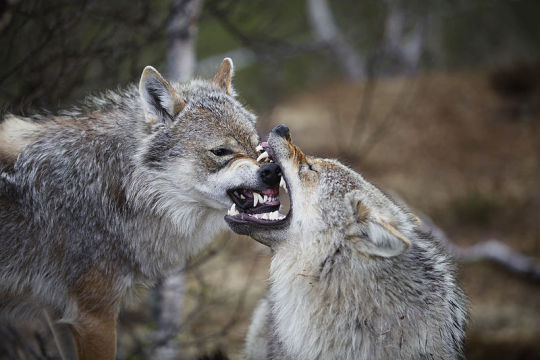

Dominance Behavior in Canids
I didn’t really even WANT to make a post about this.
The alpha-beta-omega model of wolf packs is dead in scientific literature, hammered into the ground, so to speak, and it’s been dead for over ten years. So why am I still hearing about it on TV and reading about it in articles? Why are popular dog trainers that encourage you to “be the alpha” still taken seriously?
I think the unfortunate truth is that the idea that there are strong and ferocious leaders in wolf packs and that you, too, can take on that role with your dog is just somehow appealing to people. Almost romantic, in the older sense of the word. And because of this, it makes money. It sells werewolf media. It sells dog training classes. Educational science channels that have no business promoting this false ideology keep it on board because it gets people watching.
If you couldn’t tell, I’m pretty fed up with the whole thing.
Okay, let’s talk about dominance, particularly what the word even means, because popular media does a terrible job of explaining it.
Read more…
13K notes
·
View notes
Photo


Dominance Behavior in Canids
I didn’t really even WANT to make a post about this.
The alpha-beta-omega model of wolf packs is dead in scientific literature, hammered into the ground, so to speak, and it’s been dead for over ten years. So why am I still hearing about it on TV and reading about it in articles? Why are popular dog trainers that encourage you to “be the alpha” still taken seriously?
I think the unfortunate truth is that the idea that there are strong and ferocious leaders in wolf packs and that you, too, can take on that role with your dog is just somehow appealing to people. Almost romantic, in the older sense of the word. And because of this, it makes money. It sells werewolf media. It sells dog training classes. Educational science channels that have no business promoting this false ideology keep it on board because it gets people watching.
If you couldn’t tell, I’m pretty fed up with the whole thing.
Okay, let’s talk about dominance, particularly what the word even means, because popular media does a terrible job of explaining it.
Read more…
13K notes
·
View notes